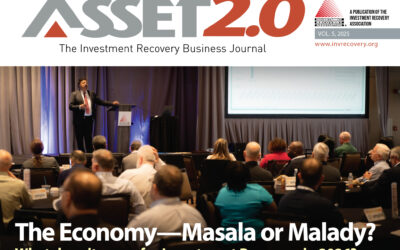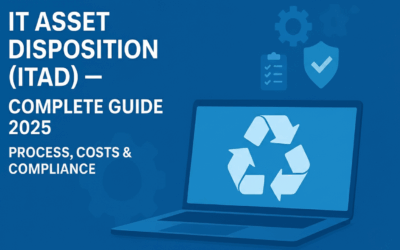From Surplus to Showcase: How Renewable-Energy Art Can Add New Value to Retired Assets
Why IRA Professionals Should Care About “Energy Art”
Investment recovery (IR) has always been about turning end-of-life assets into bottom-line benefit and environmental goodwill. A fast-growing niche—art installations powered by or built from renewable-energy equipment—is opening surprising new outlets for surplus materials:
-
Higher residual value. Pieces that can be redeployed intact (for example, surplus solar panels or specialty metals) often command a premium when an artist or public agency is footing the bill.
-
Positive ESG optics. Donating or selling decommissioned components for public art demonstrates circular-economy leadership.
-
Reduced disposal risk. Creative reuse keeps potentially hazardous items—oils, batteries, metals—out of scrap streams and landfills.
In short, “energy art” converts yesterday’s infrastructure into tomorrow’s story-telling platform—one the public is eager to engage with.
Spotlight Projects That Began Life as Power Equipment
Below are landmark examples of renewable-energy art that illustrate the opportunity for IR teams to think beyond resale or scrap:
| Year | Project | Asset Reused / Repurposed | Take-away for IR Pros |
|---|---|---|---|
| 1976 | Sun Tunnels – Utah desert | Precision-drilled concrete cylinders aligned to solstice sunrises | Even basic construction materials gain iconic status when coupled with renewable-energy themes |
| 2008 | Greetings to the Sun – Zadar, Croatia | 300 glass-encased solar cells that power a nightly light show and feed the local grid | Surplus PV modules can create civic revenue streams along with art |
| 2010 | Solar “Trees” – global parks | Pole-mounted panels that double as lights, USB chargers, Wi-Fi beacons | Small lots of mixed PV inventory can still find a second life if design is flexible |
| 2012 | Little Sun – portable solar lamp for off-grid regions | Compact PV cells, LEDs, recycled plastics | Donating overruns or obsolete micro-components can unlock new humanitarian markets |
| 2014 | Van Gogh Solar Bike Path – Netherlands | Photoluminescent stones plus embedded panels | Hybrid designs pull value from both decorative aggregates and electronics |
| 2017 | Solar Egg Sauna – Kiruna, Sweden | Custom curved PV skins powering a functional installation | High-spec alloys and specialty glazing can live on in destination art |
| 2023 | EDP Art Reef – Sines, Portugal | Sculptures cast from a decommissioned power-station’s scrap steel | Even heavy plant teardown can fuel marine-habitat art—and ESG reporting |
| 2024 | Prismatic Cloud – Los Angeles | 1,000 solar prisms on surplus framework steel | Transparent documentation of material origin lets artists pay more for traceable stock |
Note: Each project started with retired or surplus industrial material that might otherwise have gone to low-value scrap.
A Three-Step Playbook for Turning Retired Assets into Public Art
Audit early—before dismantling begins.
Identify panels, steel, conductors, transformers or even weathered concrete sections that have aesthetic or structural appeal. Capture provenance and performance data; artists and municipalities increasingly demand certificates of origin and carbon savings.
Build a creative-partner network.
-
-
City arts commissions, design schools and environmental NGOs welcome introductions to reliable industrial supply.
-
Offer site tours or digital catalogs of upcoming surplus to seed ideas and speed approvals.
-
Package the deal like any disposition project.
-
-
Valuation: Quote fair-market price vs. scrap to show the cost avoidance or donation credit.
-
Logistics: Provide cleaning, cutting or encapsulation services to ensure safety codes are met.
-
Story rights: Secure co-branding in plaques, press releases and ESG reports—these amplify ROI long after the sale.
-
Frequently Asked Questions
Q: Our surplus solar panels are mismatched models—are they still useful?
A: Yes. Artists often prize visual variety; panels can also be rewired solely for lighting rather than grid-tie performance.
Q: Who covers liability once our equipment is in an artwork?
A: Standard donation or purchase agreements can transfer risk after certified de-energization and environmental testing. Work with legal early.
Q: How do we measure success?
A: Track avoided disposal cost, revenue (or tax credit) generated, and media impressions tied to the installation. These metrics resonate with finance and ESG officers alike.
5 | Closing Thought: Creativity Extends Asset Life
The trend lines are clear: renewable-energy technology is no longer just functional—it’s cultural. For investment recovery professionals, that means every decommissioning project is also a potential public-relations and sustainability win. By scouting for artistic reuse opportunities, you transform surplus gear into community landmarks—and prove again that nothing delivers a stronger return than creative recovery.


